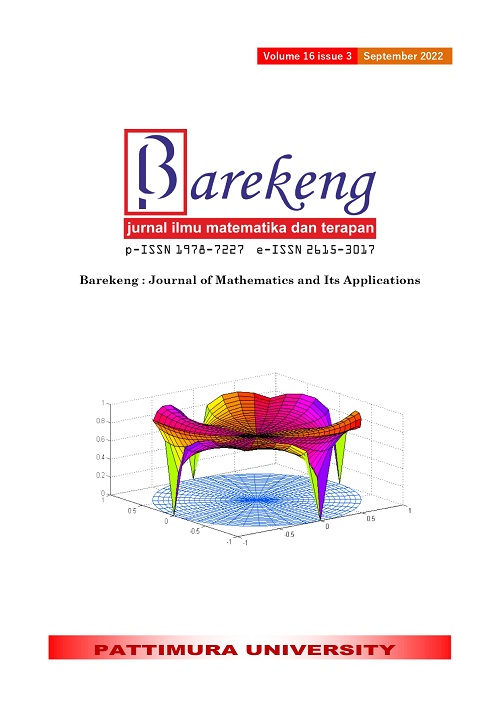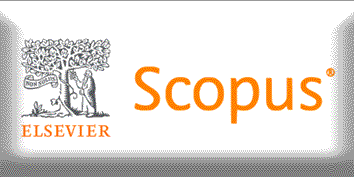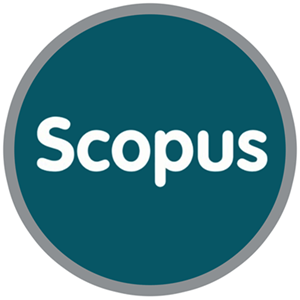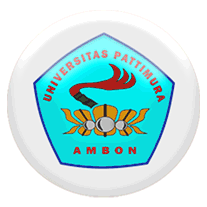MULTI-RESPONSE OPTIMIZATION OF DIELECTRIC FLUID MIXTURE IN EDM USING GREY RELATIONAL ANALYSIS (GRA) IN TAGUCHI METHOD
Abstract
In the current study, combining the powder with dielectric fluid in electrical discharge machining (PMEDM) is a very fascinating technological approach. This approach is the most effective at increasing both productivity and the quality of a machined surface at the same time. The Taguchi–GRA approach was used to optimize the surface roughness (SR), material removal rate (MRR), and micro-hardness of a machined surface (HV) in electrical discharge machining of die steels in dielectric fluid with mixed powder. Workpiece materials (with 3 levels such as SKD61, SKD11, and SKT4), electrode materials (with 2 levels such as copper, and graphite), pulse-on time, electrode polarity, current, pulse-off time, and titanium powder concentration were all used in the study. The effect on the ideal results was also evaluated using some interaction pairings among the process parameters. Powder concentration, electrode material, electrode polarity, current, pulse-on time, pulse-off time, and Interaction between workpiece material and powder concentration were obtained to be significant in the ideal condition, where larger MRR and HV are wanted (as per the HB criterion), but lower values are desired for the remaining responses, such as surface roughness (SR). Powder concentration was also discovered to be a major component, however, it only accounts for 8.35 percent of the ideal condition. MRR = 54.36 mm3/min, SR = 5.65 m, and HV =832.66 HV were the best quality attributes based on the grey grade.
Downloads
References
A. Bhattacharya and A. Batish, “Effect of process variables on microhardness, grain size and strain during machining of various die steels with powder-mixed electric-discharge machining using dummy treated experimental design,” Proc. Inst. Mech. Eng. Part B J. Eng. Manuf., vol. 226, no. 7, pp. 1192–1204, 2012.
C. Mai, H. Hocheng, and S. Huang, “Advantages of carbon nanotubes in electrical discharge machining,” Int. J. Adv. Manuf. Technol., vol. 59, no. 1, pp. 111–117, 2012.
G. Talla, S. Gangopadhyay, and C. K. Biswas, “Effect of impregnated powder materials on surface integrity aspects of Inconel 625 during electrical discharge machining,” Proc. Inst. Mech. Eng. Part B J. Eng. Manuf., vol. 232, no. 7, pp. 1259–1272, 2018.
A. N. Haq, P. Marimuthu, and R. Jeyapaul, “Multi response optimization of machining parameters of drilling Al/SiC metal matrix composite using grey relational analysis in the Taguchi method,” Int. J. Adv. Manuf. Technol., vol. 37, no. 3, pp. 250–255, 2008.
S. Ramesh, M. P. Jenarthanan, and B. K. AS, “Experimental investigation of powder-mixed electric discharge machining of AISI P20 steel using different powders and tool materials,” Multidiscip. Model. Mater. Struct., 2018.
G. Talla, S. Gangopadhayay, and C. K. Biswas, “State of the art in powder-mixed electric discharge machining: A review,” Proc. Inst. Mech. Eng. Part B J. Eng. Manuf., vol. 231, no. 14, pp. 2511–2526, 2017.
M. Kolli and A. Kumar, “Surfactant and graphite powder–assisted electrical discharge machining of titanium alloy,” Proc. Inst. Mech. Eng. Part B J. Eng. Manuf., vol. 231, no. 4, pp. 641–657, 2017.
H.-P. Nguyen, V.-D. Pham, and N.-V. Ngo, “Application of TOPSIS to Taguchi method for multi-characteristic optimization of electrical discharge machining with titanium powder mixed into dielectric fluid,” Int. J. Adv. Manuf. Technol., vol. 98, no. 5, pp. 1179–1198, 2018.
V. K. Meena, M. S. Azad, S. Singh, and N. Singh, “Micro-EDM multiple parameter optimization for Cp titanium,” Int. J. Adv. Manuf. Technol., vol. 89, no. 1, pp. 897–904, 2017.
H.-C. Liao, “Using PCR-TOPSIS to optimise Taguchi’s multi-response problem,” Int. J. Adv. Manuf. Technol., vol. 22, no. 9, pp. 649–655, 2003.
G. Derringer and R. Suich, “Simultaneous optimization of several response variables,” J. Qual. Technol., vol. 12, no. 4, pp. 214–219, 1980.
J. L. Lin and C. L. Lin, “The use of the orthogonal array with grey relational analysis to optimize the electrical discharge machining process with multiple performance characteristics,” Int. J. Mach. Tools Manuf., vol. 42, no. 2, pp. 237–244, 2002.
S. Balasubramanian and S. Ganapathy, “Grey relational analysis to determine optimum process parameters for wire electro discharge machining (WEDM),” Int. J. Eng. Sci. Technol., vol. 3, no. 1, pp. 95–101, 2011.
K. Krishnaiah and P. Shahabudeen, Applied design of experiments and Taguchi methods. PHI Learning Pvt. Ltd., 2012.
C. C. L. Wang, S.-F. Chen, and M. M. F. Yuen, “Fuzzy part family formation based on grey relational analysis,” Int. J. Adv. Manuf. Technol., vol. 18, no. 2, pp. 128–132, 2001.
D. Julong, “Introduction to grey system theory,” J. grey Syst., vol. 1, no. 1, pp. 1–24, 1989.
N. Tosun, “Determination of optimum parameters for multi-performance characteristics in drilling by using grey relational analysis,” Int. J. Adv. Manuf. Technol., vol. 28, no. 5, pp. 450–455, 2006.
C.-P. Fung, “Manufacturing process optimization for wear property of fiber-reinforced polybutylene terephthalate composites with grey relational analysis,” wear, vol. 254, no. 3–4, pp. 298–306, 2003.
Copyright (c) 2022 Veniola Forestryani, Niam Rosyadi, Muhammad Ahsan

This work is licensed under a Creative Commons Attribution-ShareAlike 4.0 International License.
Authors who publish with this Journal agree to the following terms:
- Author retain copyright and grant the journal right of first publication with the work simultaneously licensed under a creative commons attribution license that allow others to share the work within an acknowledgement of the work’s authorship and initial publication of this journal.
- Authors are able to enter into separate, additional contractual arrangement for the non-exclusive distribution of the journal’s published version of the work (e.g. acknowledgement of its initial publication in this journal).
- Authors are permitted and encouraged to post their work online (e.g. in institutional repositories or on their websites) prior to and during the submission process, as it can lead to productive exchanges, as well as earlier and greater citation of published works.






1.gif)



